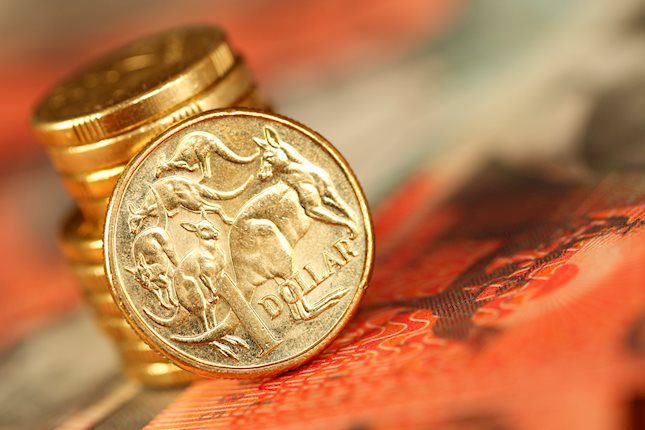- Core CPI predicted to rise 0.2% on the month unchanged from June.
- Annual core CPI expected to slip to 1.1% from 1.2% in June.
- Inflation quiet despite Federal Reserve emergency liquidity.
- CPI and PCE have not been a major policy or market concern since the financial crisis.
Consumer prices are forecast to stabilize in July following the pandemic collapse in March and April and the partial recovery in the three months since.
The core CPI rate plunged from 2.4% in February to 2.1% in March, 1.4% in April and 1.2% in May and June. It is forecast to dip to 1.1% in July which would be the lowest for this price measure since February 2011. The monthly core rate is expected to be unchanged at 0.2% after three months of deflation at -0.1% in March, -0.4% in March and -0.1% in May.
The headline inflation rate is projected to rise 0.3% in July after June’s 0.6% gain. The closure of most of the US economy forced all CPI prices into deflation at -0.4% in March, -0.8% in April and -0.1 May. The yearly rate should rise to 0.8% from 0.6% in June. This measure of prices fell from 2.5% in January to 1.5% in March, 0.3% in April and 0.1% in May for the lowest reading since -0.1% in March 2015.
Fed, QE, CPI and PCE
The Fed’s 2% core PCE target, official since the Bernanke years, has been a theoretical goal. Inflation has not been symmetric around the target and except for a few months in 2012 and again in 2018 with nine of 12 months that year at or above 2%, the core PCE target has been a rhetorical exercise.
The gains in 2018 may have been aided by the Fed’s three quantitative easing programs over the prior decade that had added trillions in liquidity to the economy but the main energy for returning prices was the buoyant economy and rising wages.
Core PCE prices averaged 1.983% in 2018, but that increase in inflation, years and trillions of dollars in the making, did not last. Inflation fell throughout 2019 ending at a 1.692% average for the year.
Reuters
The precipitous fall in core PCE inflation this year from 1.7% in March to 0.9% In April, 1% in May and 0.9% in June is due to the pandemic collapse in demand.
Since the onset of the Covid pandemic the Fed and the Federal government have flooded the US economy with more than $6 trillion in financial, economic and payroll support. Mortgage rates are at their lowest in history courtesy of the Fed’s bond purchases. Chairman Powell has said the central bank will continue its programs unit the economy is fully recovered.
Monetarist inflation, globalization and demand shocks
Prices have stopped falling. The outright CPI deflation of March, April and May has reversed.
CPI, M/M
But QE has proven that the monetarist equation that ‘prices are always and everywhere a monetary phenomenon’ has two caveats that were not evident when it was formulated.
The first is the globalization of production. Price competition in goods is no longer set in an individual economy but in toto around the world. The ability of US manufacturers to raise prices is not determined in Ohio and Michigan but in Shanghai, Vientiane, Turkey and a dozen other places. Global manufacturing is a powerful restraint on inflation.
The second is demand. If consumers aren’t buying the amount of money in the system is irrelevant. The collapse of demand after the financial crisis and again in March and April under the lockdowns showed just how vulnerable factories, retailers and prices are to customer abstinence
Conclusion and markets
Inflation will not return to its pre-pandemic range until consumer spending stabilizes.
Crashing and rebounding sales cannot provide the security for business planning that is a necessary condition for hiring.
The Fed’s focus before the pandemic was maintaining the then excellent labor market. Its goal now is to do all it can to revive that employment picture. In the economic order jobs come first, then consumer demand and last, inflation. Without a tight job market and rising consumption, there can be no upward pressure on prices.
Inflation is a distant third in central bank proprieties. Flooding the economy with cash and credit will not raise prices unless people are working and spending. Markets know this and that no CPI or PCE result will change Fed policy.
When that link is if broken, inflation is no longer a relevant statistic for trading.
Information on these pages contains forward-looking statements that involve risks and uncertainties. Markets and instruments profiled on this page are for informational purposes only and should not in any way come across as a recommendation to buy or sell in these assets. You should do your own thorough research before making any investment decisions. FXStreet does not in any way guarantee that this information is free from mistakes, errors, or material misstatements. It also does not guarantee that this information is of a timely nature. Investing in Open Markets involves a great deal of risk, including the loss of all or a portion of your investment, as well as emotional distress. All risks, losses and costs associated with investing, including total loss of principal, are your responsibility. The views and opinions expressed in this article are those of the authors and do not necessarily reflect the official policy or position of FXStreet nor its advertisers. The author will not be held responsible for information that is found at the end of links posted on this page.
If not otherwise explicitly mentioned in the body of the article, at the time of writing, the author has no position in any stock mentioned in this article and no business relationship with any company mentioned. The author has not received compensation for writing this article, other than from FXStreet.
FXStreet and the author do not provide personalized recommendations. The author makes no representations as to the accuracy, completeness, or suitability of this information. FXStreet and the author will not be liable for any errors, omissions or any losses, injuries or damages arising from this information and its display or use. Errors and omissions excepted.
The author and FXStreet are not registered investment advisors and nothing in this article is intended to be investment advice.
Recommended Content
Editors’ Picks

AUD/USD corrects toward 0.6850, awaits US PCE Price Index
AUD/USD is falling back toward 0.6850 in Friday's Asian trading, reversing from near 19-month peak. A tepid US Dollar bounce drags the pair lower but the downside appears called by the latest Chinese stimulus measures, which boost risk sentiment ahead of US PCE data.

USD/JPY pares gains toward 145.00 after Tokyo CPI inflation data
USD/JPY is paring back gains to head toward 145.00 in the Asian session on Friday, as Tokyo CPI inflation data keep hopes of BoJ rate hikes alive. However, intensifying risk flows on China's policy optimism support the pair's renewed upside. The focus shifts to the US PCE inflation data.

Gold price consolidates below record high as traders await US PCE Price Index
Gold price climbed to a fresh all-time peak on Thursday amid dovish Fed expectations. The USD languished near the YTD low and shrugged off Thursday’s upbeat US data. The upbeat market mood caps the XAU/USD ahead of the key US PCE Price Index.

Avalanche rallies following launch of incentive program for developers
Avalanche announced the launch of Retro9000 on Thursday as part of its larger Avalanche9000 upgrade. Retro9000 is a program designed to support developers with up to $40 million in grants for building on the Avalanche testnet.

RBA widely expected to keep key interest rate unchanged amid persisting price pressures
The Reserve Bank of Australia is likely to continue bucking the trend adopted by major central banks of the dovish policy pivot, opting to maintain the policy for the seventh consecutive meeting on Tuesday.

Five best Forex brokers in 2024
VERIFIED Choosing the best Forex broker in 2024 requires careful consideration of certain essential factors. With the wide array of options available, it is crucial to find a broker that aligns with your trading style, experience level, and financial goals.